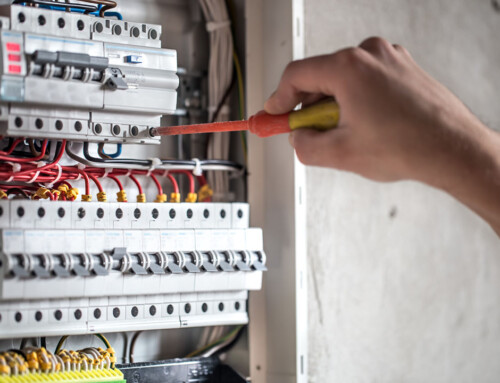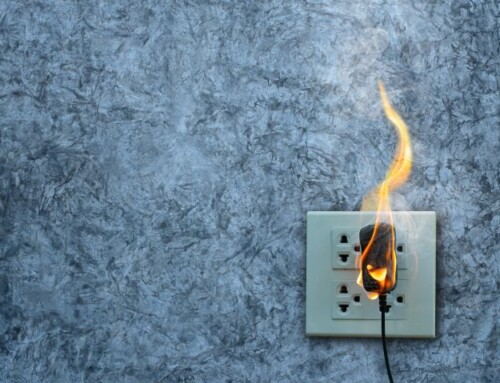Table of Contents
Have you ever been disturbed by a sudden power surge that caused havoc on your electrical devices? Everyone’s life is dependent on numerous electric equipment, both at work and in daily life. That is why it is critical to protect them against the possible harm caused by power spikes.
If you haven’t previously invested in electrical surge protectors, it should be at the top of your priority list. You don’t want to be caught off guard and have to replace a costly appliance that wasn’t in your budget.
Let’s look at what causes power surges, the types of damage they may do, and, most importantly, what you can do to avoid them.
How Do Power Surges Happen?
Power surges can occur in three different ways. First, there is a halt in the flow of electricity, followed by a short circuit. Second, when there is a rapid rise in the delivery of electricity, it is halted. Third, when a power system experiences a rapid surge of voltage caused by internal or external causes.
These surges can be as tiny as one volt beyond the maximum threshold of 169 volts or as high as hundreds of excess volts. One example of a high surge is when lightning strikes electricity lines or a transformer.
What Causes Power Surge?
Five key sources generally generate a power surge. Let us take a deeper look at each of these factors.
-
Overloaded Outlets
Take a look under your desk, behind the TV, or anywhere you’ve got a mess of wires. Plugging too many devices into one socket can cause power surges and even electrical fires. It’s a good idea to have an electrician check if all the outlets in a room are on the same circuit.
If they are, overloading one outlet might not be the issue. The circuit itself could be overloaded from powering too many appliances in the same room.
-
Incorrect Wiring
When the wiring is broken, it provides little electrical resistance. Thus, any conductive item might cause a spike in the wire’s current to reach deadly levels. It’s not always simple to check the state of your wiring without going behind the plasterboard.
However, there are several signs of a power surge to look for. If your outlets have apparent burn marks or emit a burning odor, this is cause for concern. Also, if you hear a vibrating or buzzing sound emanating from your outlets, you should get your wiring examined.
-
Lightning Strike
Did you know that over 20 million cloud-to-ground lightning strikes occur across the country each year? These strikes can generate massive power surges, which might rapidly damage any electrical items you have plugged in, including computers and televisions.
Lightning strikes can bring electricity into your house via cable TV, satellite dish cables, telephone, or electrical utility lines. To secure your precious devices, you must be prepared for such scenarios.
-
Power Failure
Have you ever noticed how your lights suddenly get incredibly bright when the power comes back on after an outage? It’s strange to believe that a power loss might generate a power surge, right?
However, the large burst of energy that restores electricity to an entire neighbourhood, town, or even state might result in excess energy flowing down the lines.
-
Energy-intensive Equipment
High-power electrical devices such as lifts, refrigerators, and air conditioners can occasionally create energy spikes. This occurs because when they turn on, they draw a large quantity of current, overloading the circuit and potentially overpowering other appliances and devices.
When this occurs, you may notice that the lights in your home or business flicker or flash off and on.
What Are the Signs of a Coming Power Surge?
It’s good to keep an eye out for a few impending signs of the power surge, including:-
- Flickering, buzzing, or dimming lights
- Frayed wiring
- Discoloration, scorching, burning, unusual odor, or smoke around outlets or cables
Symptoms which erupted post-power surge:-
- Strange odour near the equipment
- Gadgets that suddenly shut down or stop operating
- Flashing lights on digital clocks
How Often Do Power Surges Occur?
Power surges occur often. In the United States, the standard voltage is 120 volts. However, it varies between a few volts and 169 volts. Only when the voltage crosses 170 V can a possibly harmful power surge occur. Homes can go years without encountering significant surges, which are typically triggered by lightning or bad wiring.
Does Insurance Cover Power Surge Damage?
Well, insurance coverage of power surge damage depends on your policy terms. Some policies cover them for gadgets and appliances. So, you should check your policy terms to see whether it is included. You may be able to add extra coverage for power surge protection.
It’s always a good idea to contact your insurance company to obtain a better grasp of what’s covered and what extra alternatives are available.
How Can You Prevent a Power Surge From Causing Damage to Your Appliances?
There are several ways to safeguard your electronics against power spikes, including:-
- Utilize surge protectors as an added layer of protection
- Make sure large items, such as air conditioners, are plugged into separate sockets
- Don’t overload circuits
- Ensure that your wiring satisfies safety regulations
- Unplug your gadgets during severe storms
What Should You Do After a Power Surge?
Following a power spike, first of all, you must reset, disconnect, and repower any electronic devices. This should be completed before resetting your circuit breakers, especially if there was a power loss following the surge.
Next, assess your home for any damage. Inspect your appliances, devices, and electrical outlets. Finally, make sure your HVAC system is in working order. If necessary, get professional assistance for this.
What Are Surge Protectors?
Surge protectors are devices that protect electrical equipment against unexpected voltage rises in AC circuits. These valuable devices are also known by other names, such as surge suppressors, spike suppressors, or surge diverters.
They prevent excessive electricity from damaging your equipment. For extra peace of mind, consider installing a whole-house surge protector.
Are Surge Protectors Necessary?
Surge protectors are critical for protecting your electrical equipment. Unexpected voltage spikes and power surges can damage your TV, computer, or any other plugged-in device if you don’t use a protector.
These disruptions not only harm your devices but also shorten their lifespan and cause data loss. So, for further safety, consider investing in a surge protector!
How Much Surge Protection Do You Need?
The joule rating of each protector indicates how much energy it can withstand before giving up. It’s relatively straightforward: the greater the joule rating, the better the protection against power surges. To determine how much security you require, consider the worth of the equipment you wish to keep secure.
If you have high-value items, use surge protectors with greater joule ratings. This ensures they are protected from large voltage spikes, such as those induced by lightning strikes.
What are Some Critical Surge Protector Safety Tips?
Here are some simple methods to keep your surge protectors running correctly and your house secure.
- Always unwind surge protector wires before using them.
- Inspect the outlets and wires on a regular basis for frayed or damaged areas.
- Do not plug your surge protectors into extension cables or other surge protectors.
- Avoid using protectors around aquariums
- Touch your surge protector occasionally to verify it is not too hot.
- Leave your protector exposed
- Do not exceed the protector’s electrical rating
- Store your surge protectors in dry places
In conclusion, it is apparent that power surges may cause havoc on our electrical gadgets, resulting in significant damage. Understanding the causes of power surges and investing in surge protectors allows you to make proactive efforts to preserve your expensive equipment.
It’s well worth the expense to secure your devices and offer you peace of mind. So, don’t wait until it’s too late! So don’t neglect those surge protectors. Acquire them immediately to keep your devices safe!






